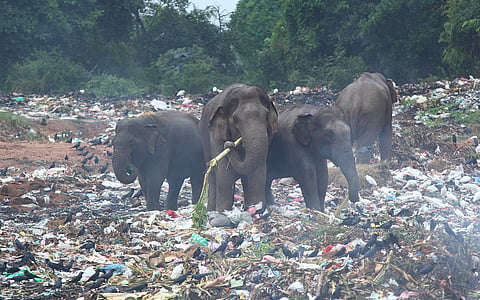

The term ‘problematic and avoidable plastic products, including single-use plastics’, refers to plastic items that are recognised for their harmful environmental and health impacts and can often be replaced with more sustainable alternatives.
‘Problematic plastics’ encompass a wide range of items that pose significant challenges throughout their life cycles. These products are typically difficult to recycle or degrade, leading to persistent pollution in ecosystems. Often improperly disposed of or littered, they contribute to habitat degradation, visual pollution, and harm to wildlife.
Examples include multi-layered packaging, plastic utensils, straws, and balloons, which are characterised by low recyclability or high rates of single-use disposal.
‘Avoidable plastics’, meanwhile, are those that can be eliminated through changes in consumer behaviour, product design, or policy interventions. These items, including many single-use and disposable products, disproportionately contribute to global plastic waste and can be substituted with non-plastic alternatives.
The treaty negotiations to end plastic pollution have prioritised addressing these problematic and avoidable plastics. Policymakers and stakeholders are working to establish effective global and national measures to phase out or restrict such products.
Strategies include removing certain plastics from the market, reducing their production through alternative practices or substitutes, and redesigning items to adhere to sustainable and safe product criteria.
These measures align with broader efforts to transition toward a circular economy, focusing on reducing reliance on harmful plastics, fostering innovation in materials and product design, and safeguarding ecosystems from the adverse impacts of plastic pollution. The ultimate goal is to implement comprehensive strategies that lower the environmental footprint of plastic consumption while promoting sustainable and responsible global consumption patterns.
Negotiations have seen a range of proposals reflecting different national priorities and approaches. The UK has introduced a two-pronged strategy to categorise plastics as either ‘problematic and avoidable’ or ‘problematic but not avoidable’, with clear recommendations for elimination or minimisation based on utility and environmental impact.
Switzerland has proposed a five-point framework to identify hazardous plastics, evaluating factors such as health hazards, recyclability, and environmental consequences. Samoa has suggested the formation of expert working groups, particularly with representation from Small Island Developing States (SIDS), to address hazardous chemicals, waste management, and financing.
Countries like Kazakhstan, India, Guatemala, Malaysia, and Russia have emphasised the need for flexibility and national discretion in addressing problematic plastics. Kazakhstan has recommended using less restrictive language, such as ‘regulate’ instead of ‘not allow’ or ‘restrict’, and opposed rigid timelines. India has advocated for a science-based approach that takes into account the availability of alternatives, arguing that global mandates may not be practical. Russia has stressed the importance of national-level identification of problematic plastics and expressed concerns over subjective terms like ‘single-use’ or ‘short-lived’, advocating for standardised definitions.
The European Union has emphasised improving design standards for problematic plastics to reduce their environmental impacts. The Cook Islands, meanwhile, have underscored the importance of adhering to the waste hierarchy, which prioritises reduction but acknowledges that restricting certain plastic products may disproportionately affect producer countries.
Overall, addressing problematic and avoidable plastics requires a delicate balance between global mandates and national flexibility. The negotiations aim to harmonise diverse perspectives into actionable policies that reduce plastic waste and pollution while fostering sustainable practices and innovations. By tackling these plastics through collaborative strategies, the treaty seeks to pave the way for a global transition toward sustainability and environmental stewardship.
To download the whole report, click here.
This is a click to zoom map. View the larger image by clicking on it